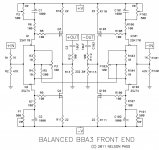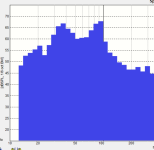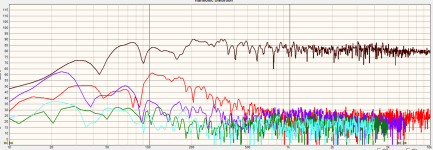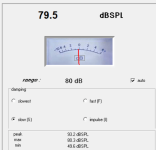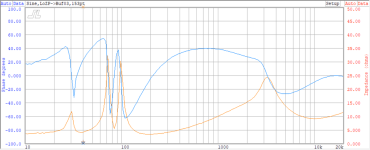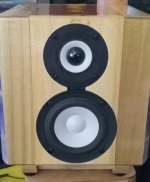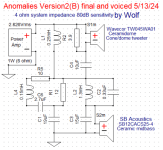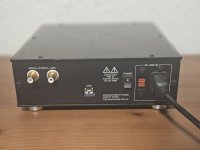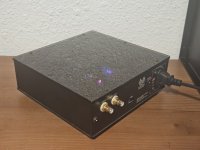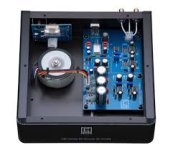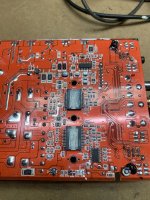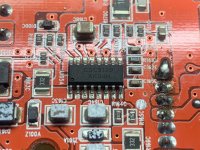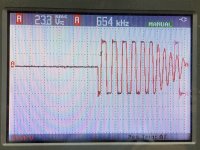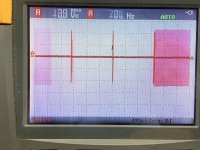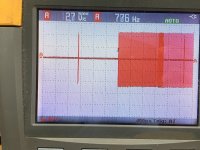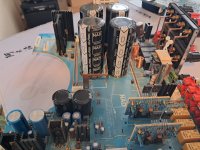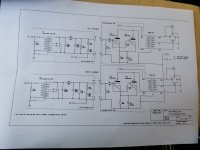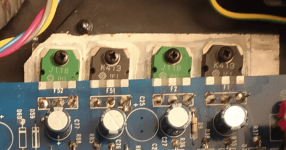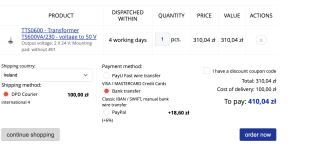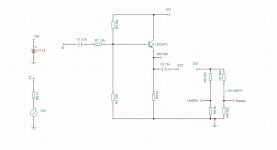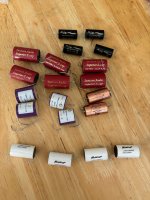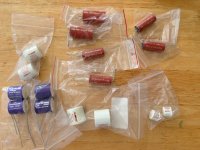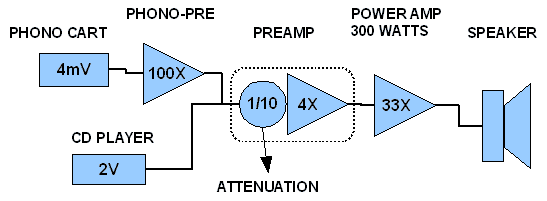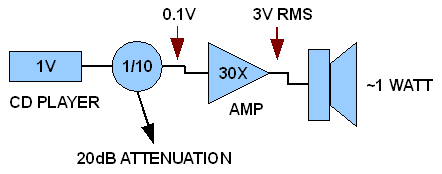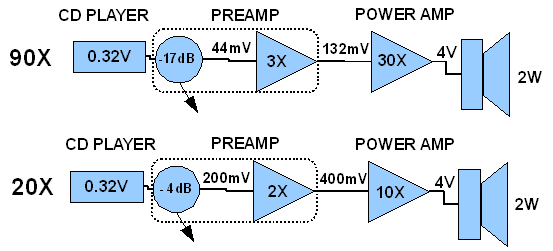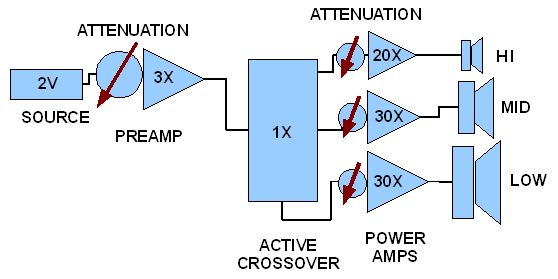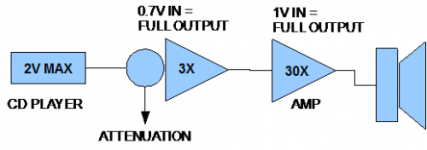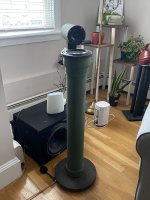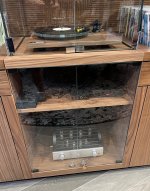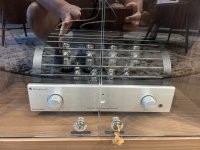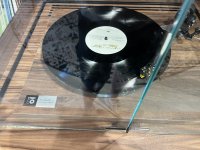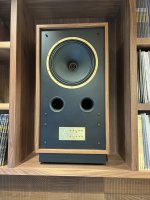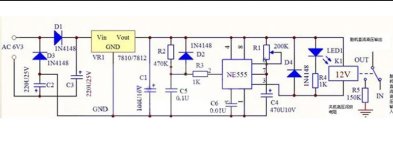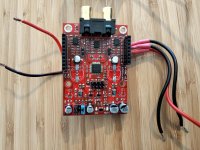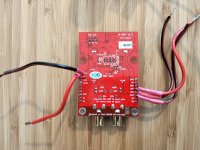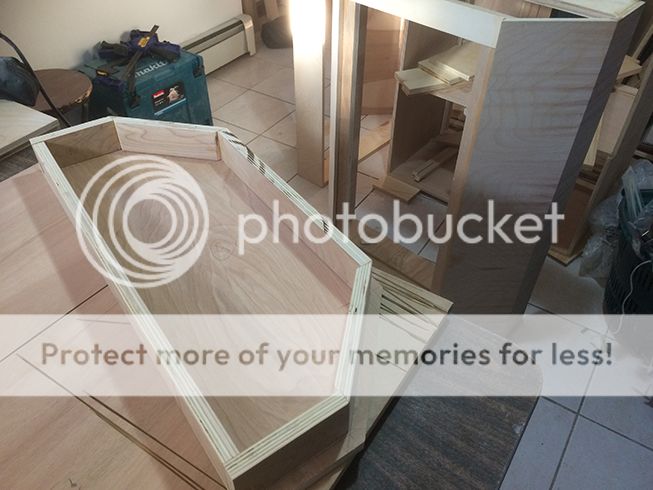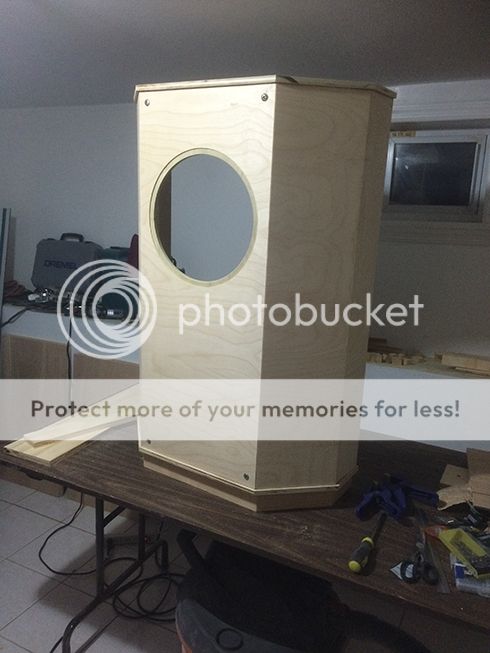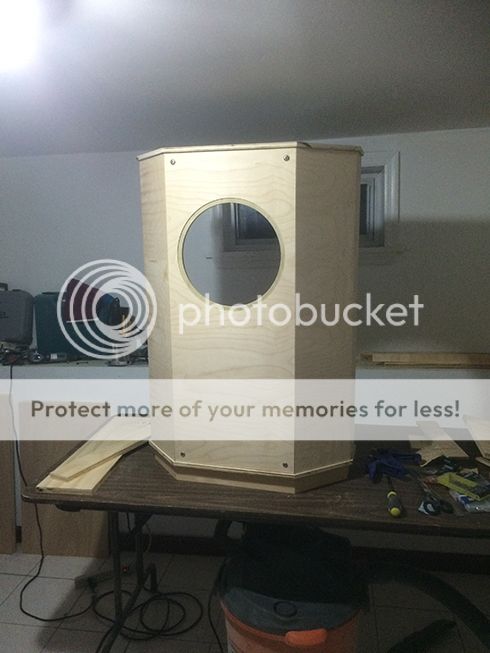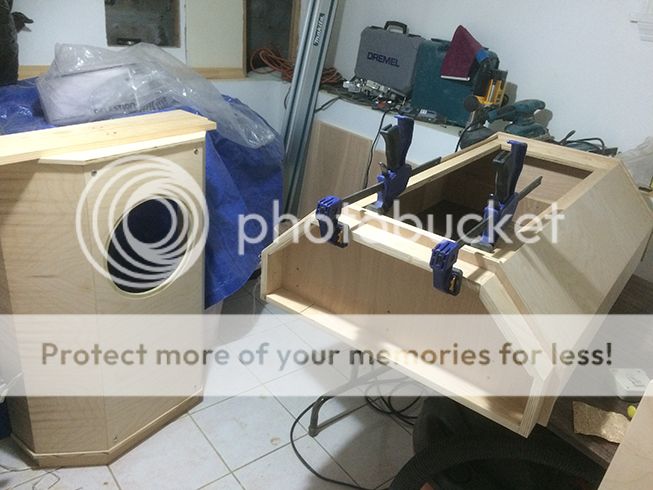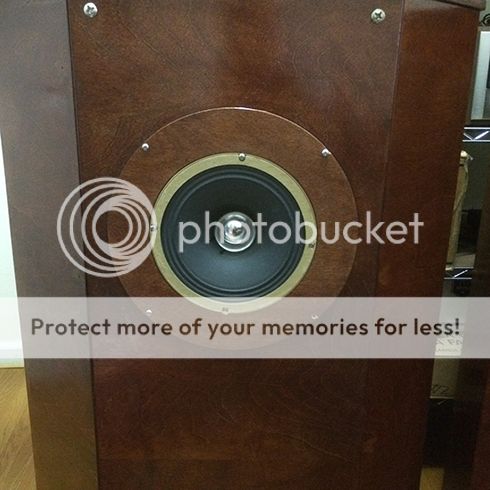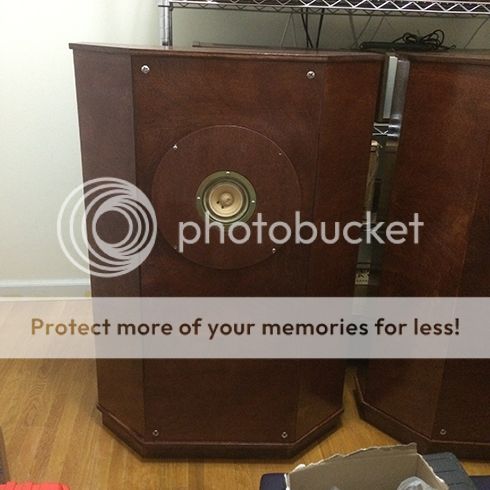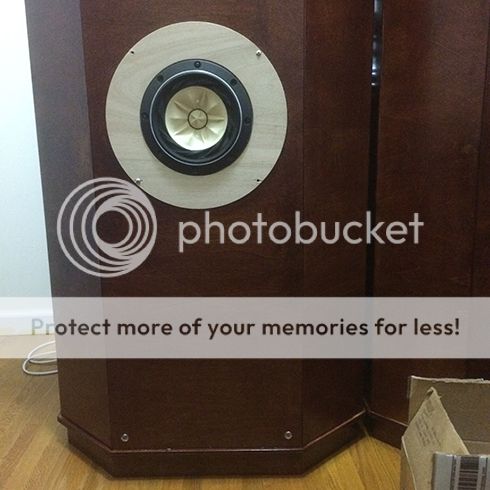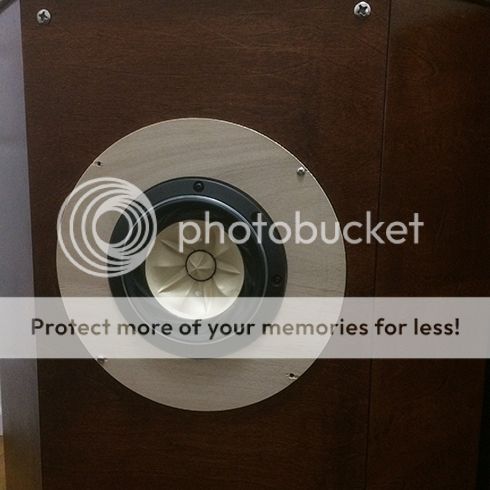Gain structure (AKA Gain Staging) is a concept that gets talked about a lot in pro audio, but most home audio folks have never heard of it. Understanding gain structure can help you get the cleanest signal possible out of your system and avoid some nasty things. Things like noise and clipping, which might sound cool from a guitar amp, but not from a Hi-Fi system!
What's gain? Basically it's amplification of the signal. When we increase the voltage level of the signal, that's gain. Current gain can also be important, but we'll mostly be talking about voltage gain here. The "structure" part of gain structure is the various voltage levels throughout your audio system and the gain it takes to get them to those levels.
How is gain expressed? Typically either in amplification factor (times or X) or in decibels (dB). So if one volt goes into an amp and two volts come out, that's a gain of 2X, or 6dB. The dB is a logarithmic function as opposed to a linear one and is often seen on VU meters and other audio scales. Take a look at this month's column by Jan Didden for more about decibels.
What is the overall gain of a typical home audio system? Let's start with an extreme example and assume that you're a vinyl lover using a moving magnet cartridge. Your speakers are inefficient and need a lot of power so you have a 300 watt power amp. How much overall voltage gain do you need to get that tiny signal coming out of the phono cartridge up to the 300 watts (50 volts) coming out of your Ear Buster amp? A lot! A gain somewhere in the neighborhood of 13000X or 82dB, sometimes more. Imagine a microscope with that kind of magnification, and all the little specks and dirtballs you might see clouding the image. Similarly, imagine all the noise your system might pick up along the way with so much gain. If you have a moving coil cartridge, its even worse!
SET amplifier fans can gloat, as they might have an overall gain of only 2000X. If they are running a CD player into a flea power amp, that might mean a gain of only 4X. But since flea power owners probably use more sensitive speakers, they can still run into noise and clipping problems.
Typical gain structure of a home audio system.
Where does the structure part come in? It's about how much gain (or loss) each section of the system has. The phono preamp will have a lot just to recover that tiny signal from the cartridge. The preamp or line stage will add a bit more, and then the power amp will have gain also. Keeping the levels reasonable throughout the whole chain gives us good gain structure.
Adding up how much gain each section has gives us the overall gain of the system. Now look over at your preamp or integrated amp with that big knob in front that "goes to eleven". What you are looking at is gain's twin brother from an opposite universe, attenuation. All that volume knob does is attenuate the signal that comes before it by dividing the signal and reducing the voltage. Typically in the 12 O'clock position the volume control attenuates by 20dB, cutting the signal to 1/10th of what it was. But it has not changed the gain of each section, only divided the signal, (attenuated it) at a certain spot.
Now we know the two sides of the structure, gain and attenuation. Both are important. Most simple home audio systems have only one point along the signal path to control gain, the main volume control, which controls only by attenuation. The gain of each section does not change, you've just divided the signal at one point. So that extreme system with an overall gain of 13000X will still have an overall gain of 13000X, it's just that somewhere along the path you've used a voltage divider (your volume control) to attenuate the signal. And the sections downstream from the volume control will amplify everything just as they always did. But now they are amplifying a smaller signal, the signal you attenuated with the volume control.
So how about a practical example? Suppose some evening you're with that Special Lady. You've poured the wine, lit the candles, and now it's time for that famous Barry White CD. Mmmmm, mmm. Bring on the love, baby. Being the smart and smooth audio dude that you are, you know that Mr. W sounds his sexy best played at 2 watts average power on the speakers in your "Love Den." So what voltage levels, gains and attenuations will you need to bring out the best in Barry? Right now you don't care, But Hey! Snap back to reality and look at the sexy graph below.
Typical voltage levels and gains
Barry's voice is going to be recorded at about 16dB (average) below the maximum level possible on the CD. That is a standard mastering level. If your CD player or DAC is standard, then that's going to mean an average level of about 0.32 volts coming out of the RCA connectors on the back. That 0.32 volts will then be amplified 3X by your preamp and 30X by your power amp. But that's 29 volts out of the power amp – over 100 watts! Not going to set the mood, is it? No, Special Lady has run for the door!
That's why we have a volume control in there - to reduce the signal to a reasonable level. You can see that the system has too much gain for the evening's festivities, but that's OK, just turn it down. Now Barry is crooning, not shouting. Throw away some signal in the middle of the chain so that it doesn't get too loud at the end. In this case the volume control has divided the voltage level by 7, (0.14X) or -17dB. So tomorrow when you want to rock out with AC/DC for your victory lap, you can just turn it up and unleash the power. So far, so good.
But if we look back at the system, we see that for most situations, we have more gain than we need. Maybe 15 to 20dB (10X) more gain than we really need. And that can lead to noise. Why? Because any noise that occurs after the volume control does not get attenuated. In fact it gets amplified. You've cut down the signal from the CD player by 17dB, so now it's 17dB closer to the noise in every circuit that follows. Any noise from the preamp, the cables, bad connections, etc. will be also be amplified 30X by the power amp. You took a medium level signal of 320mV (0.32 volts) and divided it down to 44mV so its now much closer in level to all the noise living in the bottom of the system.
Too much gain or bad gain structure not only gets us into trouble with noise and clipping, it can be a pain for practical reasons, too. I remember a big old Pioneer integrated amp from the 80's, a massive, heavy thing. Big transformer, VU meters, clip lights, serious knobs and switches. Did maybe 75 honest watts into 8 Ohms. You could connect any standard source like CD, radio, tape, phono, and you barely had to crack the volume knob to get a big blast of music. "Wow, this thing's got power, you hardly have to turn it up at all!" But did it really have tons of power? No, it just had too much gain. The volume knob would not get past 9:00 before the amp was clipping, so the useful range of the volume control was from “Nothing” at 7:00 to “Clipping” at 9:00. That sure made adjusting the volume very touchy. Stupid design, far too much gain. Despite all the other good aspects of the amp, the primary user interface, the volume knob, was a pain in the backside.
Let's return to the signal path to see where things might be done better, or where they are often done wrong. Generally speaking we want to run amps and preamps at a fairly high level. That means that the signal (the music) will be at a much higher voltage than the noise so we have a higher signal to noise ratio, S/N. That's a good thing. But just how high a signal voltage do we need to run? Usually we want the peaks of the loudest signals to be about 3dB-6dB below the maximum that device can do without distorting for the best s/n ratio. That can be hard to determine unless you've designed, built or measured the amp. Power amplifiers might give you a clue in their specs, but preamps and phono stages usually don't. How much signal does it take at the input to drive the device into clipping? Knowing that will tell you where your gain should be all through the chain.
There aren't any set standards as to what the input signal should be for a preamp or power amp to reach its maximum level, but there are some conventions. Input levels that will drive a device to full output can range from 0.77 volts to 2 or 3 volts in the consumer market, and even higher in pro audio. So you may have a preamp that will hit maximum output when it gets a 0.7V input signal. That would be a problem with standard CD players, as they output a maximum of 2V, but the preamp has a volume control, the voltage divider we talked about before, that attenuates the incoming signal. This attenuator is often the very first thing in line after the input selector. Sometimes there will be a buffer circuit before the volume pot, but that is more common in pro gear than consumer equipment. Our 2 volt signal coming from the CD player may need to be attenuated before it ever hits the preamp circuits or it will overdrive them. A typical preamp will amplify the signal by 2 or 3X after it has passed the volume control. This is then passed on to the power amp.
The power amp is going to behave much like the preamp, it has a certain amount of gain (30X is typical) and it will take a certain voltage at the input to drive the amp to its maximum power. How much voltage? Again, we may not know. You might find it in the amp's specs, or you might know because you designed or measured it. Either way, at some input voltage level, the amp will reach full power. Here is where we often find a difference in consumer power amps and pro audio power amps. Pro amps have a level adjust on the inputs, high end consumer power amps often do not. They may not need it in simple systems, but if they don't have an input level control they will apply full gain to everything coming in. The result? You have to turn down the preamp volume to keep the power amp from getting too loud. Turning down the preamp will attenuate the signal near the beginning point of the preamp circuits, leaving any and all noise from the following circuits to be fully amplified by the power amp.
Because we have attenuated the music signal at the input of the preamp, it's now closer in voltage to the noise in the whole system downstream. We’ve destroyed our good S/N ratio.
A good digital source like a CD player, DAC or high quality sound card will have a signal to noise ratio of 90dB or better. But that ratio is the maximum signal over noise. Music isn't recorded at the maximum level, its average level may be down 16, 18 or 22dB below peak, at least on well mastered CD's. But the noise floor of the device doesn't change, so effectively there is a "Music to Noise" ratio of only 74dB or less. In other words, the noise coming out of your speakers will be 74dB below the average music level. That's still very good and most of us can live with that and never hear it, but there is trouble brewing...
Looking at the flow chart above, we see two systems. On top is our system with an overall gain of 90X. Below it is a system with a lower gain of 20X. Both start out with a musical signal of the same voltage -0.32 volts and both end with 2 watts at the speaker (4 volts). But along the signal path we see big differences in the signal voltage at corresponding points. The 90X gain system has to reduce the CD output by a large amount or it will be overdriving the power amp and speaker. The 20X system uses only moderate attenuation of the signal because the subsequent gain is much less.
Now imagine that we pick up 1mV of noise right after the volume control. In the 90X system, that will reduce the music to noise ratio to 33dB. Not great. In the 20X system 1mV of noise at the same spot would reduce the ratio to 46dB, a 13dB noise advantage for the low gain system.
Picking up 1mV of noise at a less sensitive spot like at the inputs of the power amp would result in a 42dB ratio for the 90X and 52dB for the 20X system, a 10dB difference. The above example is simplified for clarity. In reality noise would be picked up all along the signal path and be amplified to various degrees, but starting out with a higher signal voltage still helps at all points along the path.
Things can get worse. What if you use a piece of pro gear like the DCX2496 crossover? It's meant for the higher signal levels of the pro world. To drive it to maximum we need 7 volts RMS! It will take lower levels, of course, but remember that those lower input levels are much closer to the DCX noise floor. Our CD player won't drive it high enough with its 2V RMS maximum output. Our preamp might just get us close. It has a gain of 3, so with the volume wide open we'll get 6V into the DCX. That's enough to keep it happy and keep the signal up out of the noise, but then what happens? The pro crossover now outputs 6 volts as well. That level is so hot it's going to drive our precious power amps into severe clipping. Six volts into our power amp with a gain of 30 means 180 volts out of the speaker terminals. Not going to happen unless it's a 4 kilowatt amp! Again, too much gain. If the power amp reaches its maximum output with a 1V input, we have no choice but to turn down the preamp. So we turn down the preamp until its output is 132mV as seen in the 90X system. If the crossover has an optimistically good S/N ratio of 95 dB, that still means 0.2mVof noise added to the signal, so we are at an S/N ratio of only 56dB coming out of the crossover. What to do?
To fix this gain structure problem we put an attenuator on the inputs of the power amps to reduce that 6 volt signal to a usable level, or we build amps with low gain. Preferably both. Or we find a crossover that works in a range closer to the signals provided by the CD player and preamp.
Obviously the more complex the system gets, the more we need to worry about gain structure. Using a simple system with only a CD player and integrated amp, we can usually just spin the Barry White disc, set the volume, and get down to business. But with a more complex system Barry may get lost in a fog of noise before you do. That's going to spoil the evening.
© Panomaniac 2011
